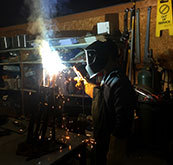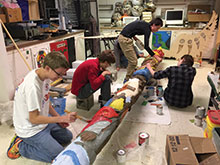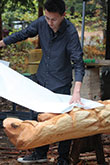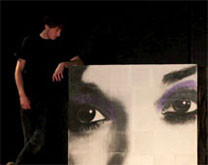My teaching philosophy is clear; students must learn how to produce and present art and theory intelligently and competently. I design courses with clear goals and construct syllabi to address these purposes. In the group dynamic we have a review of the elements and principles of design and create the first projects within the perimeters of the design process. This assures that the class can begin working with a suitable vocabulary and helps to establish the expectation of work methods. Students are required to work rigorously both in and out of the classroom and are expected to present their work for critique at each deadline. I try to create a studio environment with a culture of respect so that students are supportive to each other and are expected to excel in their projects. Students are encouraged to experiment and explore the possibilities of each medium so that they can understand the industry standards and limitations of the products. Throughout the lessons of the semester I supplement each project with slides of work with art historical relevance, video presentations, readings, current events and field trips to galleries and artist studios. Additional resources are important and I urge students to utilize their library and other professors and art professionals.
It is important to key in on the individual intelligence skills that each student has and then facilitate the most suitable approach for individual students to be introduced to new material and concepts. Although the media and the project focus may be transformed, the expectations of a dedication to work ethic and verbal communication remain constant. Developing consistent work habits in studio and seminar settings positively impact a student’s personal sense of achievement. Confidence to cultivate new ideas and innovative approaches in the studio can be difficult to accomplish without a developed since of direction. It is the role of the instructor to create an environment that will steer students in to a sophisticated sense of creative problem solving.
Visual art is a complete experience and can be a powerful language when presented professionally. Artists understand that medium and technique are basic tools of visual expression and communication. Preparing students for what lies ahead in terms of their further education and their advancement in a fine art career is a vital responsibility of an instructor. Constant emphasis on the importance of a competent portfolio each semester is reinforced by the expectation of an oral presentation of the slides and actual works completed during the course. Students leave my class having had a positive creative experience, taking with them work which is technically proficient, expressively meaningful and professionally presentable.




